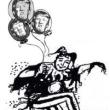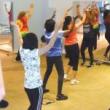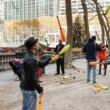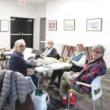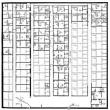free things to do in New York City
| < | April 2025 |
> | ||||
| Su | Mo | Tu | We | Th | Fr | Sa |
|---|---|---|---|---|---|---|
| 1 | 2 | 3 | 4 | 5 | ||
| 6 | 7 | 8 | 9 | 10 | 11 | 12 |
| 13 | 14 | 15 | 16 | 17 | 18 | 19 |
| 20 | 21 | 22 | 23 | 24 | 25 | 26 |
| 27 | 28 | 29 | 30 | |||
Free Events, Free Things to Do in New York City! Read More
Are you looking for free things to do in New York City (NYC) on April 1, 2025?
29 free events take place on Tuesday, April 1 in New York City. Don't miss the opportunities that only New York provides! Exciting, high quality, unique and off the beaten path free events and free things to do take place in New York today, tonight, tomorrow and each day of the year, any time of the day: whether it's a weekday or a weekend, day or night, morning or evening or afternoon, December or July, April or November! These events will take your breath away!
New York City (NYC) never ceases to amaze you with quantity and quality of its free culture and free entertainment. Check out April 1 and see for yourself. Summer or Winter, Spring or Fall! Just click on any day of the calendar above and you'll find most inspiring and entertaining free events to go to and free things to do on each day of April . Don't miss the opportunities that only New York provides!
Some events take place all year long: same day of the week, same time there are there for you to take advantage of. One of the oldest free weekly events in Manhattan is Dixieland Jazz with the Gotham Jazzmen, which happen at noon every Tuesday. Another example of an event that you can attend all year round on weekdays is Federal Reserve Bank Tour, which takes place every week day at 1 pm (but advanced reservations are required). You can take at least 13 free tours every day of the year, except the New Year Day, July 4th, and the Christmas Day. If you are classical music afficionado, you can spend whole day in New York going from one free classical concert to another. If you love theater, then New York gives you an option to attend plays and musicals free of charge, or at deep discount. You just need to have information about it. And we are here to make that information available to you.
Are you looking for free things to do in New York City (NYC) on April 1, 2025?
29 free events take place on Tuesday, April 1 in New York City. Don't miss the opportunities that only New York provides! Exciting, high quality, unique and off the beaten path free events and free things to do take place in New York today, tonight, tomorrow and each day of the year, any time of the day: whether it's a weekday or a weekend, day or night, morning or evening or afternoon, December or July, April or November! These events will take your breath away!
New York City (NYC) never ceases to amaze you with quantity and quality of its free culture and free entertainment. Check out April 1 and see for yourself. Summer or Winter, Spring or Fall! Just click on any day of the calendar above and you'll find most inspiring and entertaining free events to go to and free things to do on each day of April . Don't miss the opportunities that only New York provides!
Some events take place all year long: same day of the week, same time there are there for you to take advantage of. One of the oldest free weekly events in Manhattan is Dixieland Jazz with the Gotham Jazzmen, which happen at noon every Tuesday. Another example of an event that you can attend all year round on weekdays is Federal Reserve Bank Tour, which takes place every week day at 1 pm (but advanced reservations are required). You can take at least 13 free tours every day of the year, except the New Year Day, July 4th, and the Christmas Day. If you are classical music afficionado, you can spend whole day in New York going from one free classical concert to another. If you love theater, then New York gives you an option to attend plays and musicals free of charge, or at deep discount. You just need to have information about it. And we are here to make that information available to you.
Join the Club!
The quality and quantity of
free events,
free things to do
that happen in New York City
every day of the year
is truly amazing.
So don't miss the opportunities
that only New York provides:
stop wondering what to do;
start taking advantage of
free events to go to,
free things to do in NYC
today!
The quality and quantity of
free events,
free things to do
that happen in New York City
every day of the year
is truly amazing.
So don't miss the opportunities
that only New York provides:
stop wondering what to do;
start taking advantage of
free events to go to,
free things to do in NYC
today!
29 free things to do in New York City (NYC) on Tuesday, April 1, 2025
All events are free unless otherwise noted.Editor's Picks
Workshop | Shape Up NYC: Bodyweight Blast
Classes to help New Yorkers get and stay fit.
New York City, NY; NYC
Join the Club!
8:00 am
Free
Free
Workshop | Ribbon Dancing Workshop
Combine cardio with artistry as you wave long ribbons in the air to create rainbows, waterfalls, dragons and ocean waves. Ribbon Dancing is as visually stunning as it is fun and easy to learn. All ages and skill levels are welcome. Ribbons will be available to borrow, but participants may also bring their own.
New York City, NY; NYC
Join the Club!
9:30 am
Free
Free
Workshop | Adult Zumba
Featuring easy-to-follow Latin dance choreography. Work on your balance, coordination and range of motion.
New York City, NY; NYC
Join the Club!
10:30 am
Free
Free
Parade | 40th Annual April Fool's Day Parade
This year marks an extraordinary milestone--the 40th Anniversary of Joey Skaggs' legendary New York City April Fools' Day Parade. For four bold and unapologetic decades, this satirical spectacle has marched through the heart of Manhattan, eviscerating the most absurd social, cultural, and political figures and events of the times with outrageous floats and unrelenting mockery. What began in 1986 as a guerrilla performance protest against the increasing insanity of public life has grown into an iconic annual tradition, drawing international attention and laughter. This year, the parade promises to outdo itself with a jaw-dropping lineup of scandalous floats and laugh-out-loud caricatures celebrating the foolishness of the powerful and the absurdity of the world we live in. The 40th Anniversary Parade will feature larger-than-life floats lampooning the year's most shameless attention-seekers, power abusers, conspiracy peddlers, and tone-deaf billionaires. From political clowns to tech tyrants, social media meltdowns to courtroom circuses--no fool is safe from the sharp wit and artistic fury of this year's procession.
New York City, NY; NYC
Join the Club!
12:00 pm
Free
Free
Lecture | American Power in the Age of Economic Warfare (online)
In this lecture, Edward Fishman, a former top State Department sanctions official, uncovers the untold history of U.S. economic warfare over the last two decades. He reveals how America, under leaders like Putin, Xi Jinping, and Khamenei, shifted from globalization to leveraging its dominance in finance and technology to confront global crises and rivals, reshaping the world order.
New York City, NY; NYC
Join the Club!
12:00 pm
Free
Free
Workshop | Learn Juggling in the Park
Get in a quick lesson, stay for the whole time, or just enjoy watching them put their skills to the test. They're a friendly group and open to drop-ins, even if you catch them outside of the regular juggling lessons. All skill levels welcome. Equipment is provided.
New York City, NY; NYC
Join the Club!
12:00 pm
Free
Free
Film | The Usual Suspects (1995): Crime Thriller
The sole survivor of a shoot-out tells the story of how a notorious criminal influenced the events that began with five criminals meeting in a seemingly random police lineup. Director: Bryan Singer Cast: Stephen Baldwin, Gabriel Byrne, Benicio del Toro, Kevin Pollak, Chazz Palminteri, Pete Postlethwaite, Kevin Spacey
New York City, NY; NYC
Join the Club!
1:00 pm
Free
Free
Workshop | Mah Jongg & More
A dedicated group of adult American Mah Jongg enthusiasts for friendly and informal games, or try your hand at other card and board games. Make friends and catch up with neighbors. Sets, cards, and games provided, or bring your own.
New York City, NY; NYC
Join the Club!
2:00 pm
Free
Free
Talk | Artist Talk: Beatrice Glow
Beatrice Glow is a multidisciplinary American artist of Taiwanese heritage. Her practice spans sculpture, installations, textiles, olfactory experiences, virtual reality sculpting, and participatory performances. Bridging public history with just futures, she questions historical forms of visual and material culture, often in collaboration with culture bearers, researchers and museums to reinterpret collections through contemporary and community-based lenses.
New York City, NY; NYC
Join the Club!
3:00 pm
Free
Free
Workshop | Drop-In Chess
Play the popular strategy game while getting pointers and advice from an expert. Chess improves concentration, problem solving, and strategic planning -- plus it's fun. For ages 5 and up.
New York City, NY; NYC
Join the Club!
3:00 pm
Free
Free
Book Club | Reading Rhythms: Reading Party
Meet and mingle with fellow book lovers at a 58th St Library Reading Party. Read quietly with others in the programing room as we play a curated playlist! Hang out afterwards to talk books with patrons and librarians alike. Remember to bring a book or check one out from the library beforehand!
New York City, NY; NYC
Join the Club!
3:00 pm
Free
Free
Classical Music | Award-Winning Collaborative Pianist Performs Works of Richard Strauss and Alison Bauld (In Person AND Online!)
International competition-winner Jinhee Park, vocal collaborative piano, performs two pieces as well as offering insight into the music with an included talk. Program Richard Strauss (1864-1949) Drei Lieder der Ophelia, Op. 67 Alison Bauld (1944-) Ophelia’s Lament
New York City, NY; NYC
Join the Club!
5:00 pm
Free
Free
Museums | Historical and Modern Design Spanning Centuries
The museum is dedicated to showcasing the history, influence, and importance of design in everyday life. Housed in a historic mansion, the museum features a diverse collection of design objects, including decorative arts, architecture, graphic design, textiles, and industrial design. Free admission is daily 5 pm - 6 pm.
New York City, NY; NYC
Join the Club!
5:00 pm
pay-what-you-wish...
pay-what-you-wish...
Park Walk | Woodcock Walk in the Park
It’s timberdoodle time! The American woodcock is a regular visitor to the park in March and early April, and they’re hosting a special off-season birding tour to celebrate these unique birds. This is an after-work walk with guide Gabriel Willow, and learn about the wonderful worm-eaters who make the park their springtime home-away-from-home.
New York City, NY; NYC
Join the Club!
5:00 pm
Free
Free
Classical Music | Works of Brahms and More for Viola (In Person AND Online!)
Jeremy Klein, viola, performs works by composers of different musical eras, from the Baroque through the 20th Century. Program Arcangelo Corelli (1653-1713) Violin Sonata in A Major, Op 5, No 6 Tōru Takemitsu (1930-1996) A String Around Autumn Ralph Vaughan Williams (1872-1958) 4 Hymns Johann Brahms (1833-1897) Clarinet Sonata No 1, Op 120, No 1
New York City, NY; NYC
Join the Club!
5:00 pm
Free
Free
Workshop | Learn Juggling in the Park
Get in a quick lesson, stay for the whole time, or just enjoy watching them put their skills to the test. They're a friendly group and open to drop-ins, even if you catch them outside of the regular juggling lessons. All skill levels welcome. Equipment is provided.
New York City, NY; NYC
Join the Club!
5:30 pm
Free
Free
Classical Music | Prize-Winning String Trio Performs Works of Mozart and Dvorak
The 2024 Lerman Gold-Prize winning Amara Trio (Christina Nam, violin, Nagyeom Jang, cello, and Kevin Jansson, piano) plays two pieces from Mozart and Dvorak. Program Wolfgang Amadeus Mozart (1756-1791) Piano Trio No. 4 in E Major, K. 542 Antonin Dvorak (1841-1904) I. Allegro ma non troppo from Piano Trio in F Minor, Op. 65
New York City, NY; NYC
Join the Club!
5:30 pm
Free
Free
Book Discussion | Third Culture Cooking: Classic Recipes for a New Generation
Zaynab Issa launches a collection of everyday multicultural recipes that meld the old with the new and the familiar with the unfamiliar to create bold flavors and new classics for the next generation of cooks. In conversation with Christina Chaey, followed by a signing.
New York City, NY; NYC
Join the Club!
6:00 pm
Free
Free
Workshop | Mat Pilates
A strengthening and lengthening exercise that focuses on conditioning your core muscles while also training your arms and legs. This class incorporates key Pilates principles such as postural alignment, breathing, strength, controlled movement and flexibility. This class is perfect for beginners but intermediate and advanced movers will also benefit. Bring your own mat.
New York City, NY; NYC
Join the Club!
6:00 pm
Free
Free
Lecture | Streets in Ancient Egypt: An Archaeology of In-Between Space
In recent decades, Egyptian archaeology has increasingly focused on the study of ancient Egyptian settlements from various periods of pharaonic history. However, the streets in these settlements have often been overshadowed by studies concentrating primarily on the interiors of buildings, particularly domestic spaces. This is due to the misconception that ancient Egyptian streets were merely transitional spaces—passageways where little activity took place. However, textual sources contradict this view, suggesting that streets were vibrant spaces of dynamic social interaction, including activities such as sex work and robbery. This talk challenges the notion that ancient Egyptian streets were purely transitional spaces by applying an interdisciplinary approach that integrates archaeology, spatial analysis, textual sources, and ethnography. Examining settlements from the Middle Kingdom (ca. 2055–1650 BCE), Second Intermediate Period (ca. 1650–1550 BCE), and New Kingdom (ca. 1550–1069 BCE)—including Abu Ghalib, Tell el-Dab‘a, Lahun, Elephantine, and Amarna, new light is shed on the nature of ancient Egyptian street life. Speaker Dr. Uros Matic is a senior fellow at the College for Social Sciences and Humanities of the Ruhr University Alliance in Essen, Germany.
New York City, NY; NYC
Join the Club!
6:00 pm
Free
Free
Discussion | Adventures in Italian Opera with Met Soprano Federica Lombardi
The sixth Adventure in Italian Opera with Fred Plotkin of this season features Italian soprano Federica Lombardi, who will be singing the role of Countess Almaviva in Mozart's Le nozze di Figaro at The Metropolitan Opera.
New York City, NY; NYC
Join the Club!
6:30 pm
Free
Free
Book Discussion | The Pope at War: The Secret History of Pius XII, Mussolini, and Hitler - with Pulitzer Prize Winning Author
Documents of Pope Pius XII, who ruled the Vatican Church from 1939 to 1958, remained sealed since his passing. The archives were opened in 2020, allowing world's leading Vatican historian David I. Kertzer to uncover how the pope prioritized protecting the church over moral leadership during WWII. Pulitzer Prize-winning writer David Kertzer will discuss his latest book, The Pope at War: The Secret History of Pius XII, Mussolini, and Hitler, with Professor of History at Boston College Charles R. Gallagher.
New York City, NY; NYC
Join the Club!
7:00 pm
pay-what-you-wish, registration required
pay-what-you-wish, registration required
Book Discussion | Trauma Plot: The Cost of Survival
A brilliant, biting, and beautifully wrought memoir by Jamie Hood on trauma and the cost of survival
New York City, NY; NYC
Join the Club!
7:00 pm
Free
Free
Reading | No Name Super Storyteller Party
No Name Comedy/Variety Show producer Eric Vetter brings New York’s best established and emerging authors and storytellers including Tom Burnett, Robin Reif, Dave Lester and more.
New York City, NY; NYC
Join the Club!
7:00 pm
Free
Free
Lecture | Paganism: A Lens for Understanding Modern Politics with Yale History Professor (online)
Are we living in an age of enlightenment or divination? A scholar of the history of Central Europe, Ukraine, the Soviet Union, and the Holocaust, Timothy Snyder suggests that our era--distracted by the new yet shaped by ancient patterns--resembles a political religion rooted in something older than Christianity, perhaps even pagan. Social media and extreme wealth inequality have fostered behaviors that feel mythical but may instead reflect recurring historical cycles.
New York City, NY; NYC
Join the Club!
7:00 pm
Free
Free
Classical Music | Trio Introduces New Stringed Instrument, the Fadolin (in-person and online)
Trio Fadolin -- Sabina Torosjan (violin), Ljova (fadolin), Valeriya Sholokhova (cello) -- is a new ensemble with a unique sonority. The fadolin is a new instrument that encompasses the range of the violin, viola, and most of the cello, finding its footing in an acoustic chamber music setting for the first time. In their inaugural season, Trio Fadolin has been presented by Lincoln Center, Carnegie Hall, The Kennedy Center, the Perelman Performing Arts Center (PAC NYC) and the Metropolitan Museum of Art. The Trio's repertoire includes works by Ukrainian composers Vasyl Barvinsky, Mykola Kolessa, and Miroslav Skoryk, Spanish-American composer Andrea Casarrubios, Estonian-American composer Lembit Beecher, music from Jewish composers Moshe Weinberg and Alexander Zhurbin, folk music from Eastern Europe and Scandinavia, in addition to original works and arrangements by their fadolinist, Ljova.
New York City, NY; NYC
Join the Club!
7:00 pm
Free
Free
Workshop | Stargazing in the Park
Immerse yourself in the wonders of the night sky. The friendly team from the Amateur Astronomers Association will be there with high-powered telescopes, ready to reveal the secrets of the cosmos.
New York City, NY; NYC
Join the Club!
7:45 pm
Free
Free
Book Discussion | Nimitz’s Newsman: Waldo Drake and the Navy’s Censored War in the Pacific (online)
Historian Hamilton Bean will speak on his latest book. When Lt. Cdr. Waldo Drake, USNR arrived in Pearl Harbor in June 1941 as the U.S. Pacific Fleet’s first Public Relations Officer (PRO), he was an admired maritime reporter for the Los Angeles Times and Reserve Officer appointed to intelligence duties. By October 1944, he was hated by most of the correspondents assigned to cover the war against Japan and seen by officials in Washington as an obstacle to the development of Navy public relations. What led Drake to become the Pacific Fleet’s first PRO, what happened during the three years he served on the CINCPAC staff, and why he was removed from that position are the focus of Nimitz’s Newsman: Waldo Drake and the Navy’s Censored War in the Pacific. Following the Japanese attack on Pearl Harbor on December 7, 1941, Adm. Chester Nimitz, USN assumed command of the Pacific Fleet and inherited Drake’s services. Drake became responsible for informing America’s press about the Pacific Fleet’s wartime role and thus gained an outsized ability to influence American public opinion. The Navy’s decision to allow public relations officers to censor press copy caused numerous conflicts between Drake and the correspondents assigned to the Fleet. It was Drake’s love for the Navy, his tendency to take on every job himself, and above all his close relationship with Adm. Nimitz that allowed him to perform censorship duties with approval. Drake’s protection of Nimitz, and his reticence to give the press any information that could endanger operational security or dampen morale, caused Navy victories to go under-reported—much to the consternation of officials in Washington. In analyzing the dynamics of Drake and Nimitz’s relationship, and in highlighting Drake’s interactions with correspondents and Navy officials, Nimitz’s Newsman reveals the inside story of the Navy’s censored war in the Pacific during World War II.
New York City, NY; NYC
Join the Club!
8:00 pm
Free
Free
Classical Music | Works by Prokofiev, Saint-Saens, and More for Cello (In Person AND Online!)
I-Jou Yang, cello, performs pieces by composers of various musical period. Program Joseph Dall'Abaco (1710-1805) 11 Caprices for Cello Solo Iannis Xenakis (1922-2001) kottos Sergey Prokofiev (1891-1953) Cello Sonata in C Major, Op. 119 Sergei Rachmaninoff (1873-1943) Melody, Op. 21, No. 9 Camille Saint-Saens (1835-1921) Allegro appassionato, Op. 43
New York City, NY; NYC
Join the Club!
8:00 pm
Free
Free
Join the Club!
Today's Events
All 622 Events
Events This Week
Events This Weekend
Contact FAQ Reviews About Terms of Use Privacy Policy
All events are free unless otherwise stated. All programs subject to change. Please confirm before going.Contact FAQ Reviews About Terms of Use Privacy Policy
© Copyright Club Free Time. All rights reserved.
